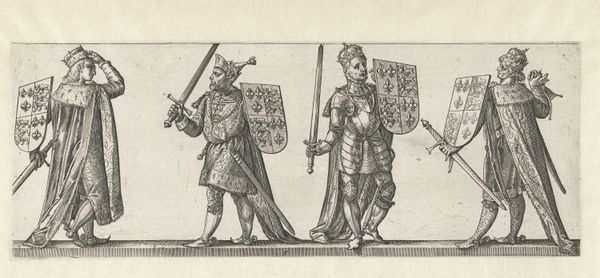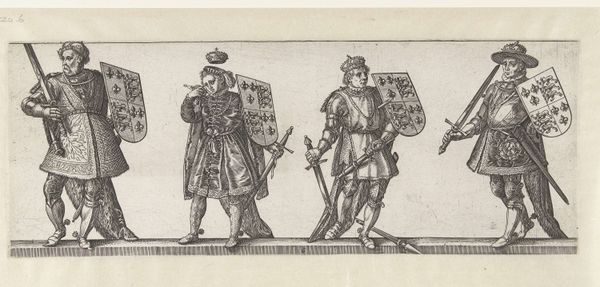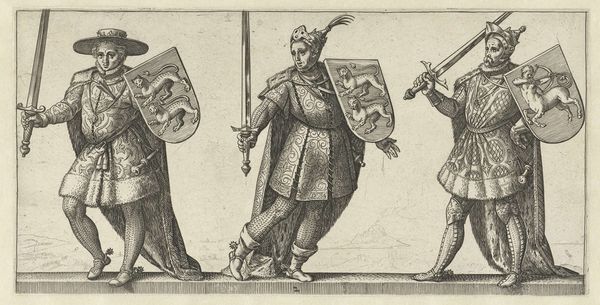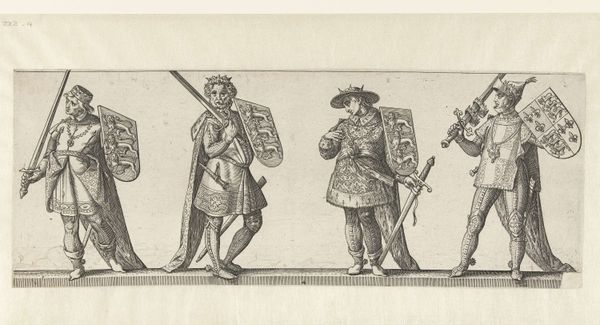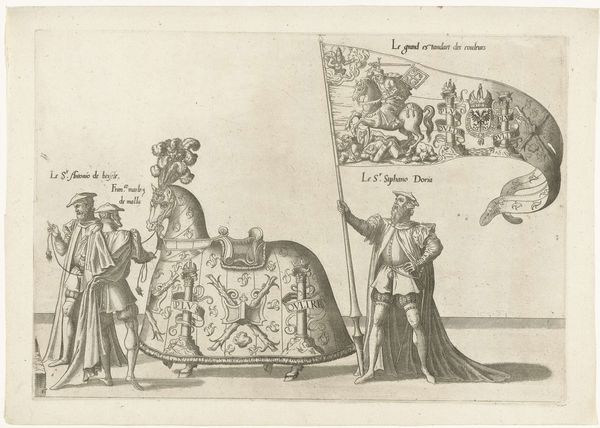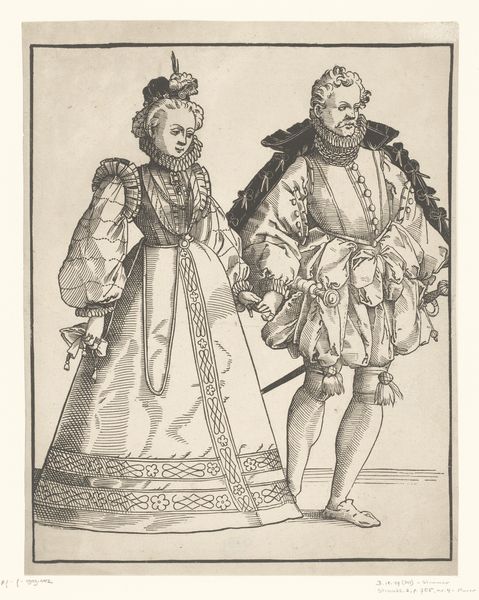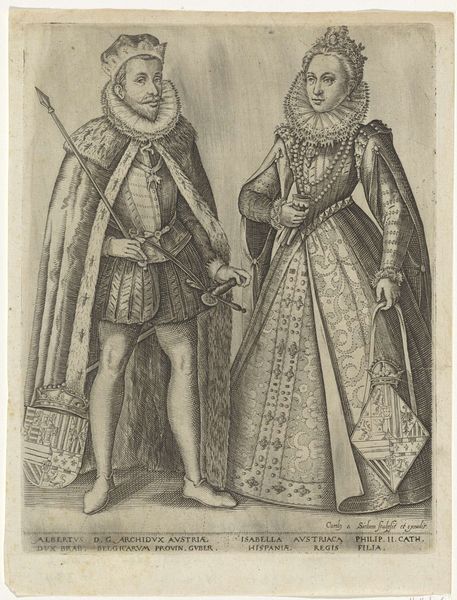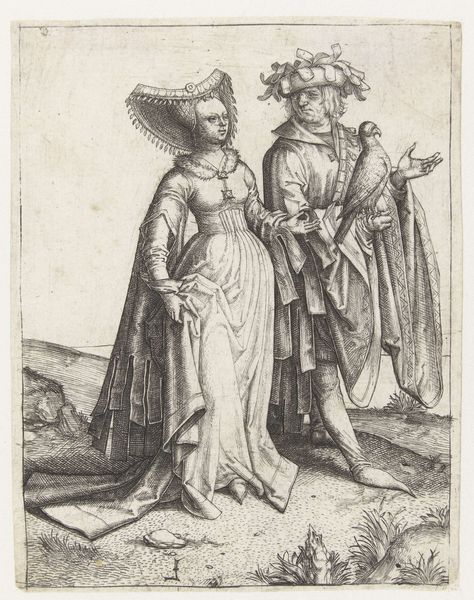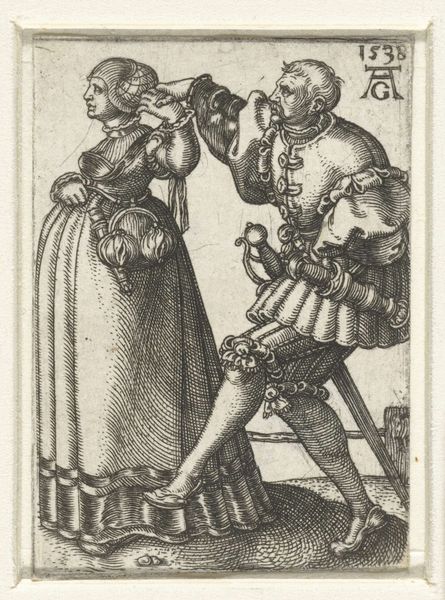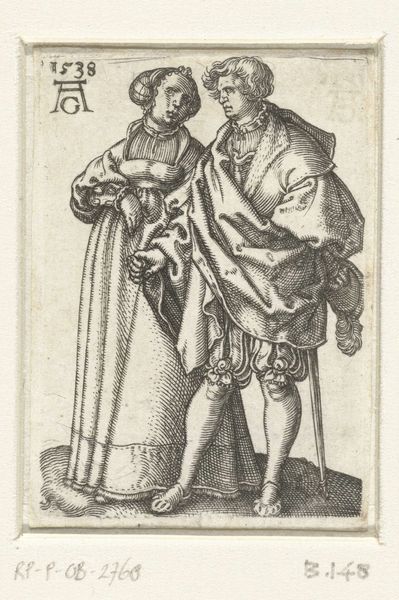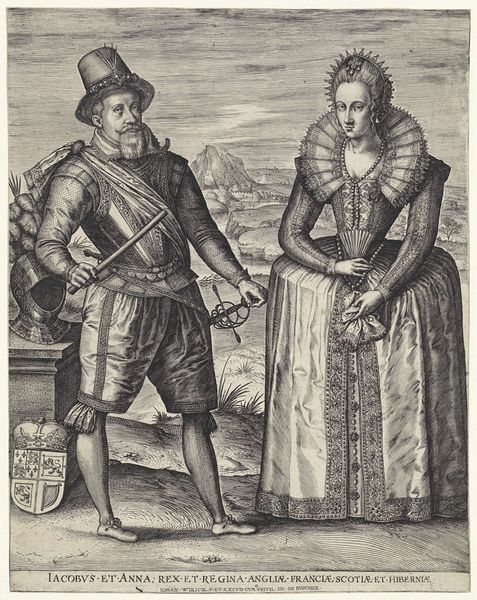
Koningen Hendrik VIII en Edward VI, koninginnen Mary en Elizabeth 1584
0:00
0:00
print, engraving
#
portrait
# print
#
mannerism
#
figuration
#
history-painting
#
engraving
Dimensions: height 145 mm, width 385 mm
Copyright: Rijks Museum: Open Domain
Editor: This engraving from 1584 by Hendrick Goltzius, titled "Kings Henry VIII and Edward VI, Queens Mary and Elizabeth", presents these four iconic English monarchs in a row. They look quite severe and imposing. What strikes me most is how each figure carries a shield with a coat of arms. What is the story Goltzius is trying to tell? Curator: The inclusion of those coats of arms are definitely key, signaling dynastic power and legitimacy. The print dates from a politically turbulent period, particularly in the Netherlands under Spanish rule. Remember, Goltzius was Dutch. How do you think the depiction of English monarchs might function within that context? Editor: Possibly to critique monarchy in general? Or perhaps even to offer an alternative to Spanish rule, by showing a different kind of sovereignty? Curator: Exactly. Prints like this circulated widely and were often used to comment on contemporary political situations under the guise of historical representation. Consider the choice of monarchs. Why highlight this particular lineage, especially at this time? Editor: Well, Elizabeth was on the throne. Maybe it’s also making a statement about female rule by positioning her as a successor to powerful male rulers, but also another queen. Curator: Precisely. It subtly reinforces Elizabeth’s right to rule by situating her within a clear, visually articulated genealogy. Furthermore, it speaks to the Protestant succession given Henry VIII’s break with the Catholic Church, in contrast with Mary. Notice also that Elizabeth appears in relatively simple clothing when compared with the splendor of Mary’s raiment. Does this reflect anything of their politics and time in power? Editor: I hadn’t noticed that, but it probably speaks to their differing religious beliefs, and how that influenced their styles and power. I’m seeing so much more context here than just a portrait of rulers. Curator: Indeed. The print cleverly uses historical imagery to engage with the complex political landscape of its own time, making it not just a portrait but a statement on power, religion, and legitimacy.
Comments
No comments
Be the first to comment and join the conversation on the ultimate creative platform.
